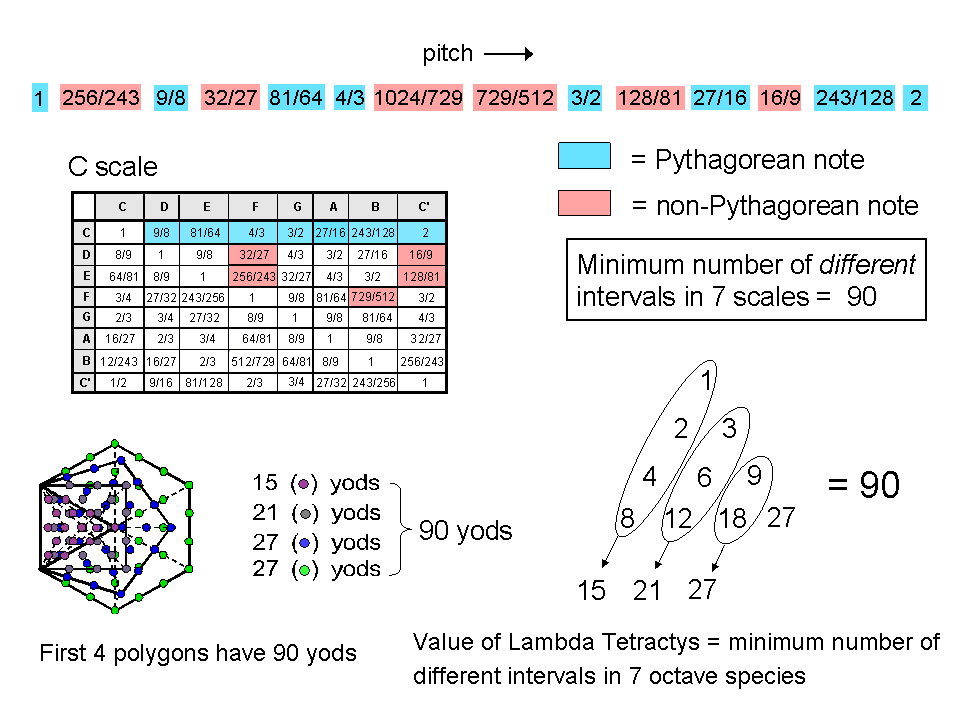
| << Previous 1... 30 31 [32] 33 34 ...45 Next >> |

Examination of the table of the tone ratios of the notes in the seven musical scales reveals that 12 types of notes exist between the tonic and octave, making 14 in total. Eight (highlighted in blue) are Pythagorean and six (highlighted in red) are non-Pythagorean. The table of intervals for the C scale indicates that the 28 intervals other than 1 include seven different Pythagorean ones, some of which are repeated, and five different non-Pythagorean ones, some of which are repeated. Hence, the 28 intervals comprise (7+5=12) different intervals and 16 repetitions of these intervals. If one looks at the six other scales and counts how many different intervals they have and how many repetitions of them occur, one finds (see Article 16, WEB, PDF) for the seven scales 83 different intervals (46 Pythagorean, 37 non-Pythagorean). The diploid number 46 encountered in the discussion of the Greater Perfect System reappears as the number of different Pythagorean intervals making up the seven scales. They include seven octaves, so that there are (83−7=76) different intervals other than octaves. This shows how YAHWEH ELOHIM, the Godname of Tiphareth with number value 76, prescribes the seven scales (see page 16 at the link above for how all the Godnames prescribe the seven scales). Noting that the tonic is repeated as the interval between each note and itself, seven tonics can be included in the set of 83, making in total 90 different intervals. 51 such intervals belong to the four authentic modes and 39 to the three different plagal modes. As 51 is the 50th integer above 1 and the 26th odd integer, this shows how ELOHIM, the Godname of Binah with number value 50 and YAHWEH with number value 26 prescribe the authentic modes.
The significance of the number 90 is that it is the sum of the ten integers making up the Lambda Tetractys, the first of the four faces of the Tetrahedral Lambda:
|
1 |
||||
| 2 | 3 | |||
| 90 = |
4 |
6 |
9 |
|
|
8 |
12 | 18 | 27 . |
This is another piece of evidence that the seven scales constitute a holistic system. It is confirmed by the fact that the first four enfolded polygons, which constitute a holistic system (for proof, see Article 48, WEB, PDF) have 90 yods outside their shared, root edge. Moreover, the numbers of yods in the triangle, square, pentagon & hexagon outside their root edge are, respectively, 15, 21, 27 & 27, which are, precisely, the sum of the integers along diagonal rows of the Lambda Tetractys! Such remarkable parallels cannot be due to coincidence. Instead, they indicate the existence of a universal pattern that appears in all holistic systems. This is discussed at length in the author's new book (see also The holistic pattern). As there are 14 types of notes amongst the minimal set of 90 different intervals in the seven octave species, there are (90−14=76) repetitions of these notes. YAHWEH ELOHIM prescribes the repeated intervals in the minimal set.
| << Previous 1... 30 31 [32] 33 34 ...45 Next >> |